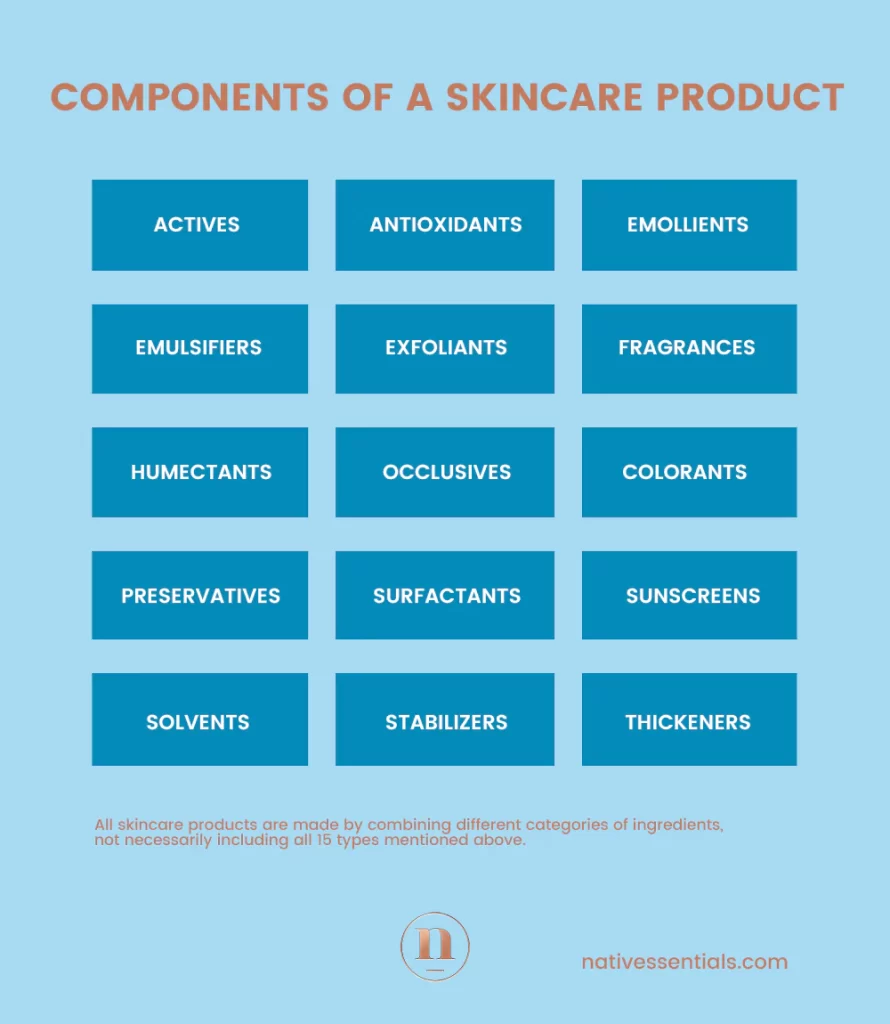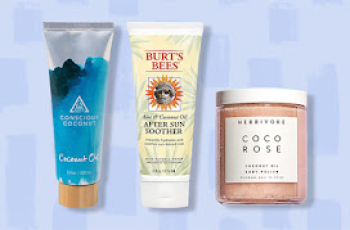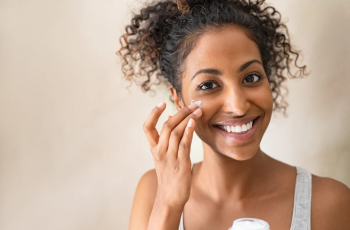
Have you ever wondered how a skincare product is made? Whether natural or synthetic, cosmetic formulators work with 15 main ingredient categories.
Many natural ingredients sound very ‘chemical’ but are plant-derived botanical extracts, So don’t be put off by complex-sounding ingredients, and learn with us how to spot plant-based skincare ingredients genuinely.
In this article, you will learn:
what are the components of a skincare product
how to identify the main natural ingredients by category
list of many plant-based ingredients widely used in natural skincare
The Basics – Components of a Skincare Product
In a nutshell, there are 15 main categories under which ingredients used in cosmetic formulations fall.
Native Essentials Skincare Components of a Skincare product
- ACTIVES
Actives are compounds that interact and communicate directly with the skin cells; they are the most potent ingredients that can penetrate the dermis and stimulate the skin to repair, renew, increase collagen production, and hydrate, nourish and protect itself.
MYTH – the more active ingredients in a product the better.
TRUTH – a good formulation with the correct combination of actives that do not duplicate each other makes a great product.
Some examples of mainly plant-based or derived ingredients:
ACTIVES – REVITALIZING
revitalize the skin and hair
by accelerating biochemical processes Caffeine, Creatine, Adenine
ACTIVES – ANTIMICROBIAL prevent the growth of bad microorganisms
(causing infections, acne, odor) Salicylic acid, Azelaic Acid, Niacinamide (Vit B3)
some essential oils components
(Phenols, Thymol, Farnesol, Benzoic acid…)
ACTIVES – ANTI-INFLAMMATORY prevent or resolve inflammation, helping
the skin to regenerate without infections
or tissue damage. First step to prevent ageing Asiaticoside, asiatic acid, madecassoside (Centella extract) some essential oils components (from Chamomiles, Frankincense…), Oleanoic acid (Olive oil)
ACTIVES – BRIGHTENING prevent or lighten hyperpigmentation Arbutin, Azelaic acid, Ellagic acid, Kojic acid, Oryzanol….
VITAMINS / AGE- DELAY protect the skin cell membranes ls from free radicals damage, communicate with skin receptors for improved functioning. Essential for ageing and dull skin Vit. A and Retinoids, Vit. B group (Panthenol, Biotin, Niacinamide), Vit. C (Ascorbic acid, Vit. D, Vit E (Tocopherol) Vit. K
- ANTIOXIDANTS
Antioxidants help protect the skin’s surface from oxidative damage caused by free radicals, UVA/UVB, pollution and lifestyle (poor diet, smoking, no sunscreen…). Antioxidants not only limit the production of free radicals but can neutralize them when they come into contact with your skin.
Some examples: Aminoacids (Cysteine…) , Carotenoids (Beta Carotene…) Flavonoids (Epigallocatechine gallate from Green Tea …), Peptides, Enzymes (Peroxidases..), Phenols (Resveratrol…), Ferulic acid, Vitamin C, E…
MYTH – antioxidants don’t work that much
TRUTH – long-term oxidative damage can lead not only to early wrinkles and sagging skin but to various skin diseases
- EMOLLIENTS
Emollients can only penetrate the upper layer of the skin, the Epidermis; they are lipids that soften rough skin and nourish dry skin by preventing water loss. Natural emollients (plant oils) are also packed with good anti-inflammatory fatty acids and vitamins, while synthetic emollients have the only skin barrier function.
Some examples: Plant oils like Rosehip oil (ex Rosa canina seed oil), Cacay oil, (NOT essential oils, but cold pressed oils), Ceramides, Squalane. Mineral oil is actually a synthetic emollient.
MYTH – oils increase the chance of breakouts and pores clogging
TRUTH – only emollients with high comedogenic rate may increase breakouts and pores clogging
- EMULSIFIERS
As oil and water don’t mix, emulsifiers or binding agents make products like moisturizers. Water and lipid ingredients are mixed and kept stable as an emulsion, preventing the separation of components. Emulsifiers are also essential for modifying the texture of a skincare product.
Some examples: Sorbitan Olivate, Cetearyl Olivate, Cetearyl Alcohol, Cetearyl Glucoside, Glyceryl Stearate, Lecithin …
MYTH – emulsifiers are unnecessary and toxic
TRUTH – there are plenty of perfectly safe plant-based emulsifiers
- EXFOLIANTS
Exfoliants help to remove dead skin cells that otherwise will prevent the complete absorption of any skincare product and make the skin rough, uneven, and dull.
There are physical or chemical exfoliants; avoid irregular physical exfoliants (avoid rough sugar granules and opt for spherical jojoba beads) and keep chemical options (AHA’s…) at the skin level your skin can tolerate as a weekly routine.
Some examples: physical: jojoba beads, almond meal grounded, salt… chemical (AHA’s, BHA’s, PHA’s, Papain, Salicylic acid, Bromelain, Papain)
MYTH – exfoliation is dangerous and can cause skin reactions
TRUTH – weekly exfoliation with safe chemical / physical exfoliants helps the skin renewal and increases skincare penetration.
- FRAGRANCES
Fragrances, synthetic or natural, impart a pleasant aroma and mask some ingredients’ inherent smell. Some essential oils can interact at a cellular level and be absorbed by the dermis.
Some examples: Essential oils (ex. Lavandula Angustifolia (Lavender) oil) , absolutes, hydrosols (Linalool, Citronellol, Limonene, Geraniol … indicate that the fragrance is natural in the EU – fragrance is usually synthetic and no more details are needed)
MYTH – essential oils are harmful to your skin
TRUTH – within industry dermal limit safety standards, essential oils are perfectly safe.
- HUMECTANTS / MOISTURIZERS
Humectants retain and deliver moisture, essential for the skin to function correctly; moisturizers help create a protective barrier to prevent water loss or transepidermal water loss (TEWL).
Some examples: Amino acids (Glycine…), proteins and peptides (Collagen, Elastic, silk proteins…), Hyaluronic acid, Sodium hyaluronate, Glycerin, Sorbitrol, Honey, Trehalose, Allantoin, Ectoin, Urea
MYTH – humectants are the same as moisturizers
TRUTH – they are different but complementary
- OCCLUSIVES
Occlusives form a protective coating on the surface of your skin to reduce transepidermal water loss (TEWL). Occlusives are also important as they prevent contact with irritants and allergens, especially for people with eczema and dermatitis.
Some examples: Butters (ex. Butyrospermum Parkii (Shea) Butter) , Waxes, Coconut oil (Synthetic agents are Silicones, Mineral Oil, Petrolatum…)
MYTH – occlusives clog pores and don’t allow the skin to ‘breathe.’
TRUTH – they are beneficial, especially with dehydrated skin and skin conditions like eczema, or to protect the skin from cold weather
- COLORANTS
Colourants are dyes, pigments, natural botanical extracts, and plant powders that can impart colour to a skincare product. They can be mineral-based, synthetic or plant-based. Natural colourants are usually listed with the name of the plant they are extracted from. In EU / Asia synthetic pigments are listed with the prefix CI and 5 numbers, in the US … lake.
Some examples: Organic pigments (plant extracts ex Spirulina Platensis Powder), Inorganic pigments (iron oxides)
MYTH – adding colour to my moisturizer will stain my skin
TRUTH – if the formulation is correct and tested, the skin will not be stained
- PRESERVATIVES
Preservatives are essential with every formulation containing water. They prevent microbial growth and contamination during formulation, shipment, storage or consumer use. There are many plant-based preservatives available for food and topical use.
Some examples: Sodium levulinate, Sodium anisate, Sorbic acid, Citric acid, Tocopherol, Propanediol , Ethylhexylglycerin, Lactobacillus Ferment
MYTH – preservative-free is acceptable and safe
TRUTH preservative-free is unsafe and can cause nasty infections
- SURFACTANTS
Technically within the same category of emulsifiers, surfactants are substances that degrease, emulsify oils (hence the classification as emulsifiers) and fats, allowing them to be washed away. In other words, soap.
Some examples: Sodium Lauroyl Glutamate, Coco glucoside, Decyl glucoside, Lauryl glucoside, Sucrose cocoate, Caprylyl/Capryl glucoside.
MYTH – surfactants are harsh on the skin
TRUTH – surfactants are all PH dependent, and the skin reacts if the PH is too alkaline
- SUNSCREENS
Sunscreen protect the skin by harmful UV rays; they are available as physical barrier (mineral origin) or chemical barrier (synthetic). A few botanicals offer a modest UV protection.
Some examples: Zinc oxide, Titanium dioxide, Oryzanol (Synthetic sunscreen agents that are under scrutiny for size effect are avobenzone, octinoxate and oxybenzone…)
MYTH – Zinc oxide can’t offer the same UV protection as a chemical sunscreen agent
TRUTH – Physical sunscreen agents are as effective as their chemical counterparts
- SOLVENTS
Solvents are liquid ingredients used to dissolve or break down other ingredients to form a solution. They enhance the functionality, texture and feel. They are the main ingredients of liquid soaps, shampoos, toners, and serums.
Some examples: Water, hydrosols (ex Rosa damascena flower water) , Propylene Glycol (this can be synthetic and plant-derived but listed with the same name )
MYTH – Solvents are harmful
TRUTH – Water and its derivates (hydrosols) are perfectly safe
- STABILIZERS
Stabilizers are liquid ingredients used to increase a product’s stability and make it safer; they also maintain the function and activity of other ingredients like actives, fragrances and essential oils.
Some examples: Sodium phytate, Propanediol
MYTH – Stabilizers are not necessary
TRUTH – They are essential to ensure the stability of a product
- THICKENERS AND ABSORBENTS
Thickeners modify the viscosity of a product, and in some cases, they have gelling properties (serums). They can also act as stabilizers to maintain an emulsion’s stability (water + oil = cream).
Some examples: Gums (Xanthan gun, Guar gum, Konjac gum, Agar, Sodium alginate, Carrageenan) Cellulose, Clays, some emulsifiers like Cetyl alcohol, Stearic acid
MYTH – Thickeners are drying
TRUTH – it is the opposite, as they can even act as water-retaining agents (moisturizers)


